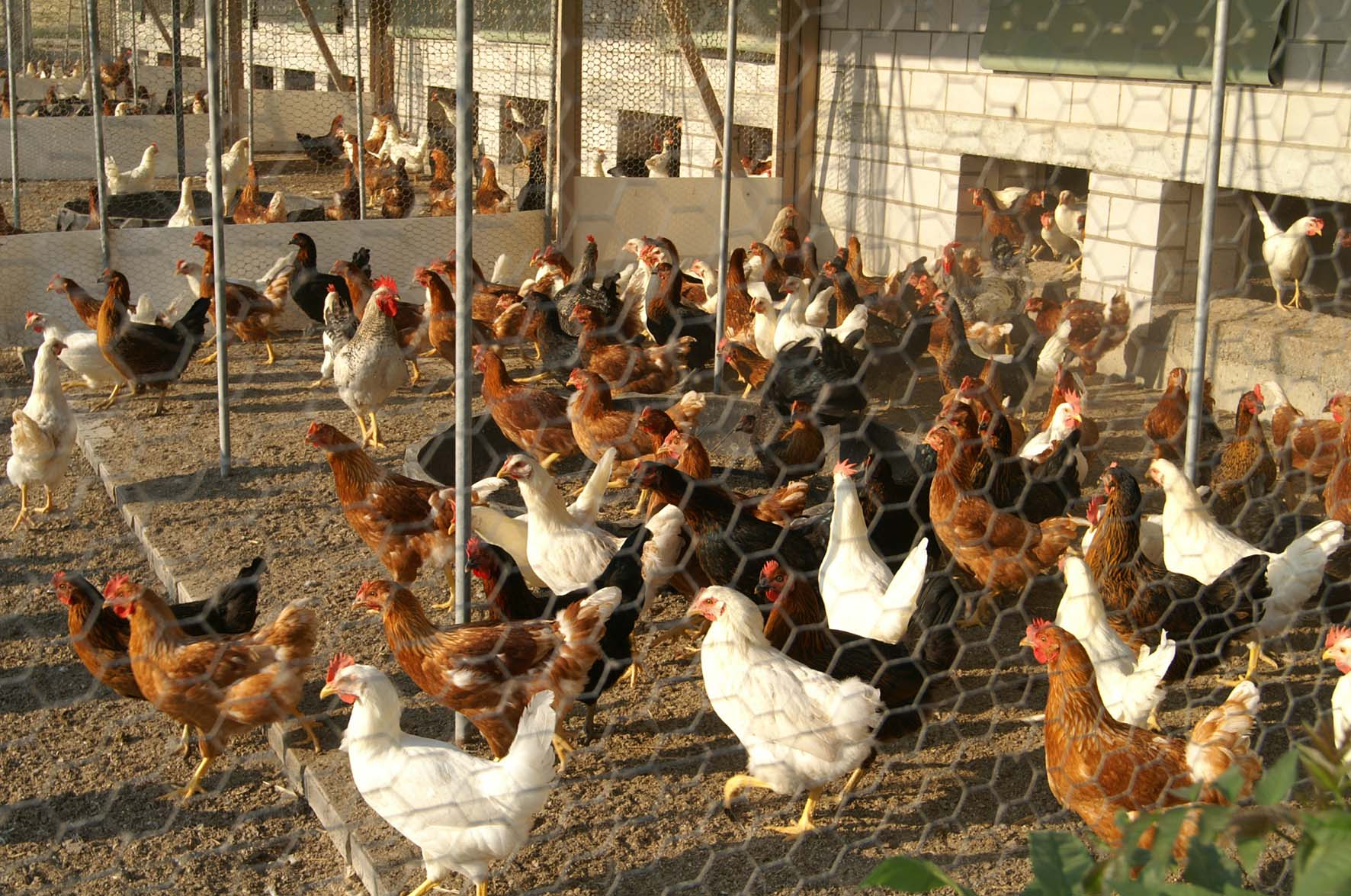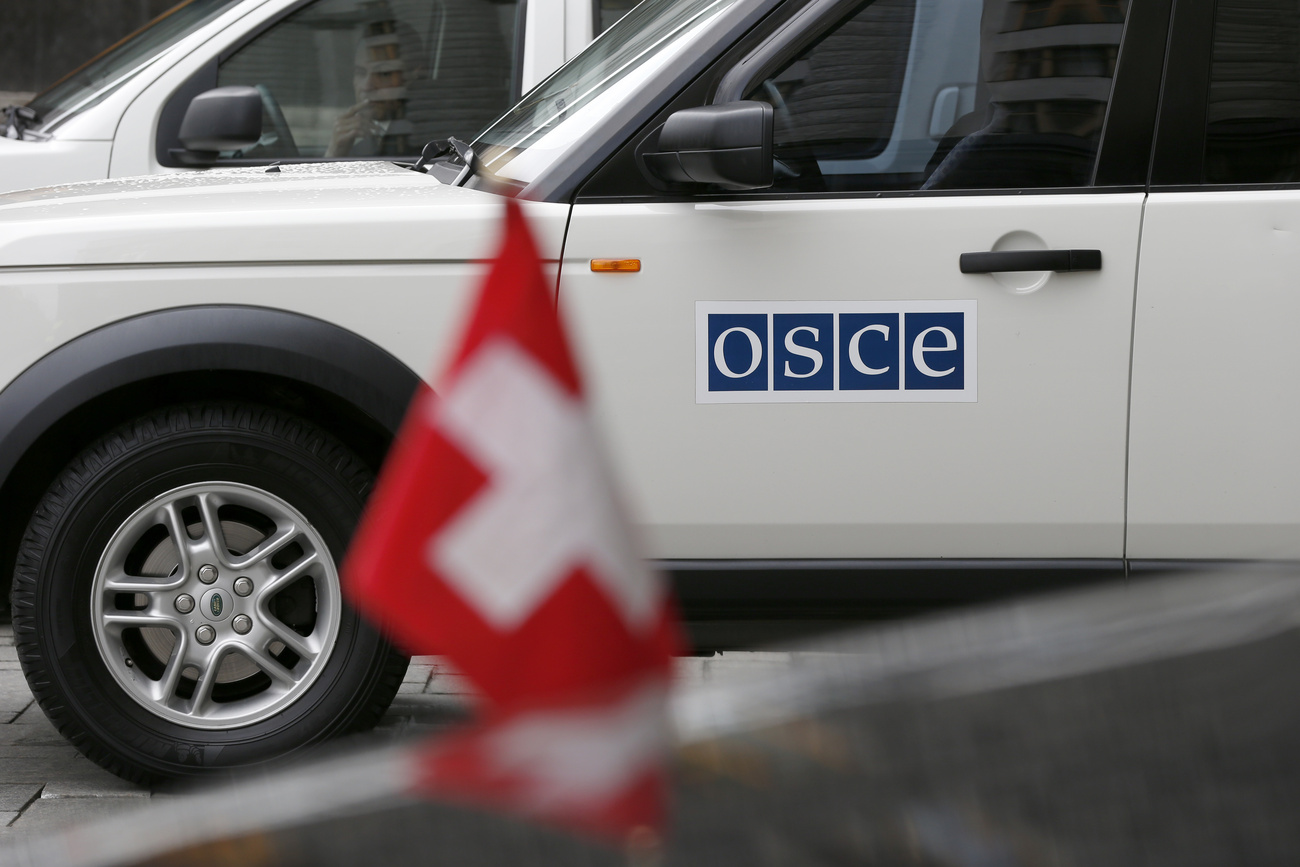
Easter is over… but try telling the hens

Around two million Swiss laying-hens were busy up to and during Easter as consumers bought eggs to celebrate the holidays in the traditional way.
With Easter over, the appetite for eggs has returned to normal and demand has dwindled – resulting in a surplus.
The problem is to some extent solved with the slaughtering of more hens now than is normal.
The government has also lent a hand by contributing SFr2 million ($1.87 million) to help bring the market back on track.
“A quarter of the money is used for the lowering of prices within a limited time and the other three-quarters is used for eggs that go into the [food] production process,” Oswald Burch managing director of the GalloSuisse producers’ association told swissinfo.ch.
Pasta and biscuits
That means that while many eggs will end up soft-boiled on the breakfast table, others are destined for the production of pasta, biscuits or other baking products.
But Swiss egg producers face the problem that the government is cutting the subsidy and they will find it difficult to sell their eggs for production purposes; most eggs used by the food industry are imported.
Both Burch and Hannes Messer, director of egg wholesalers EiCO, feel there is potential for Swiss production eggs.
“But we can only produce more when the [food] industry recognises [the value] of Swiss eggs,” Messer explained to the Swiss farmers’ information service.
Burch at GalloSuisse knows exactly where the problem lies.
Imported eggs
“The potential is rather big but it is a bit difficult to get people in the production business to use Swiss eggs. They can import eggs which are less expensive… the industry tends to keep costs as low as possible and prefer imported eggs to Swiss eggs.
“That is a key problem. If we could succeed to get a foothold in this segment, it would help a great deal.”
Industry, quite naturally, also wants eggs that are available all year round, rather than for a limited period, for example around Easter.
Egg dealer Othmar Hungerbühler says that Swiss eggs will never be competitive when compared with the cheaper foreign competition.
The solution?
But he has come up with a solution, shared by others, to try help ease the problem. That would entail Swiss producers increasing the availability of their hens’ eggs for industry by allowing their birds to live longer.
On average, a Swiss hen lays an egg once a day for 12 months or so. Extending its life for another three months would provide the eggs that could then go into food production.
There would be less profit for the producer because laying-hens slow down after 12 months, their egg shells tend to become thinner and the eggs themselves increase in size. But it may well be seen as a plus for those consumers who buy their eggs straight from the farm and appreciate larger sizes.
GalloSuisse director Burch also sees an ethical side to allowing hens to live longer before slaughter.
“The egg-producing hens live for a year or so and then they are slaughtered because there are new hens to be put in the hen houses. That in itself is an ethical problem for a lot of people.
“So, if the hens live longer, they don’t have to be replaced as soon by younger hens. You could look at that and say it reduces the problem,” he said.
Robert Brookes, swissinfo.ch
The egg producers’ association says Swiss hens spend lots of time outside instead of being held in cages, they enjoy first-class feed and have the best health programme in the world.
The husbandry system for hens most commonly used in Switzerland is the aviary system. The chickens may roam freely on the ground, scratch the ground in dust bathing areas, fly between several levels and rest on perches.
Free-range husbandry is the one the public identifies with the most; but it is also the most demanding and relatively expensive. That’s why free-range and organically produced eggs cost more.
Why is it that before Easter and the Christmas season, when demand for eggs is at a peak, more eggs are available in the shops? The hens’ laying cycle and laying capacity are known, enabling a poultry farmer to plan production meticulously. He can plan the output of eggs ahead of time and adjust it to the demand.
Conversely, too many eggs in a lull cause costs for inventories to rise and prices to collapse. The size of an egg and the thickness of the egg shell are contingent on the hens’ laying cycle, too. (GalloSuisse)
The Swiss eat about 1.5 billion eggs a year.
About 70% of eggs sold to consumers are of Swiss origin.
Only about 4% of eggs used in Switzerland to produce food (pasta, biscuits and the like) are Swiss.
According to Swiss food legislation, the origin of a product ingredient only has to be declared if it makes up more than 50% of the total weight.
The Swiss therefore eat more foreign eggs in food products than they realise.

In compliance with the JTI standards
More: SWI swissinfo.ch certified by the Journalism Trust Initiative



























You can find an overview of ongoing debates with our journalists here . Please join us!
If you want to start a conversation about a topic raised in this article or want to report factual errors, email us at english@swissinfo.ch.